The Story Behind Frida Kahlo’s Art-Filled Garden
By Keshav AnandNestled in the Colonia del Carmen neighbourhood of Coyoacán, Mexico City, the Frida Kahlo Museum — known as La Casa Azul owing to its striking cobalt blue walls — stands as a testament to the life and artistry of the iconic Mexican painter, Frida Kahlo. This historic home was not only her birthplace but also where she spent her formative years, resided with her husband and fellow artist Diego Rivera, and eventually passed away in a room on the upper floor.
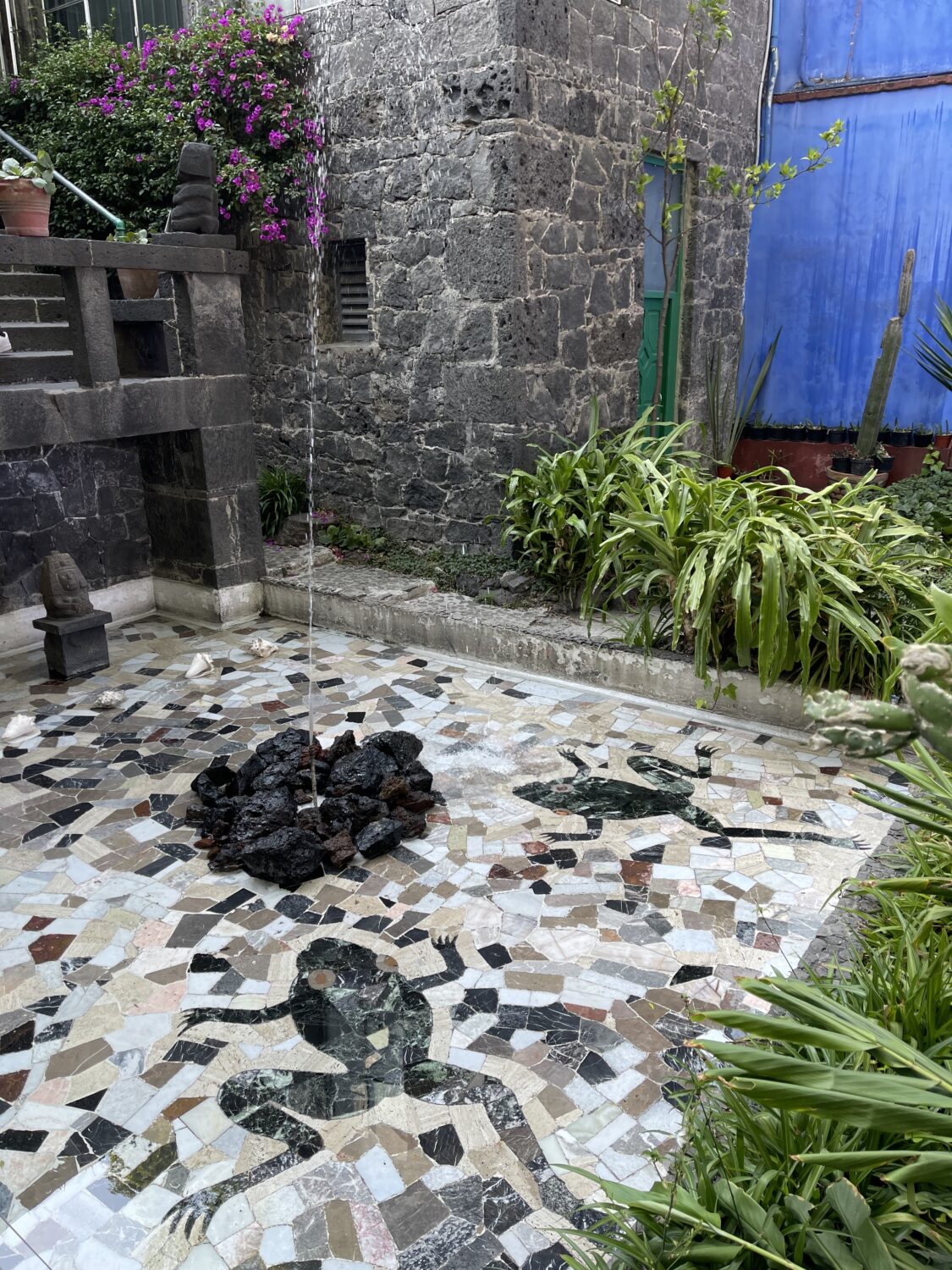
Kahlo was an avid collector throughout her life. Her collections include a myriad of cultural objects, from hundreds of devotional paintings and thousands of photographs to botanical field guides, scientific publications about Mexican plants, poetry books, jewellery, and traditional Mexican attire. As a child, she gathered plant specimens from the parks and gardens of Coyoacán. And as an adult, her findings were carefully cultivated in the garden of Casa Azul.
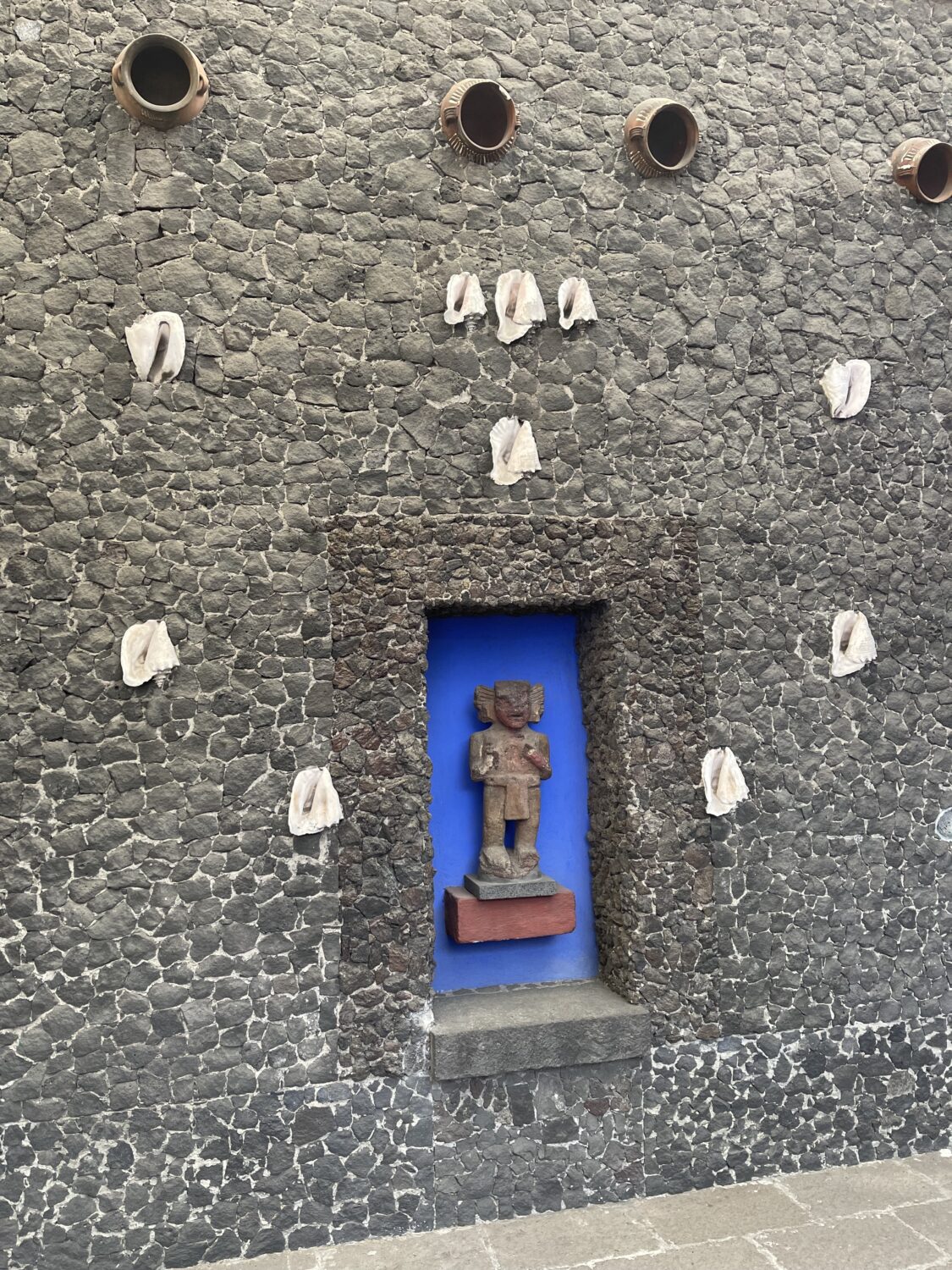
During Kahlo’s youth, her family home reflected the European tastes that were in vogue at the time, with Neoclassical architectural details, a layout inspired by Spanish-Moorish traditions, and a garden brimming with imported plants, from fragrant roses to palms. In 1929, when Kahlo and Rivera inherited Casa Azul from Kahlo’s father, the couple meticulously set about redesigning both the interior and exterior spaces of the property.
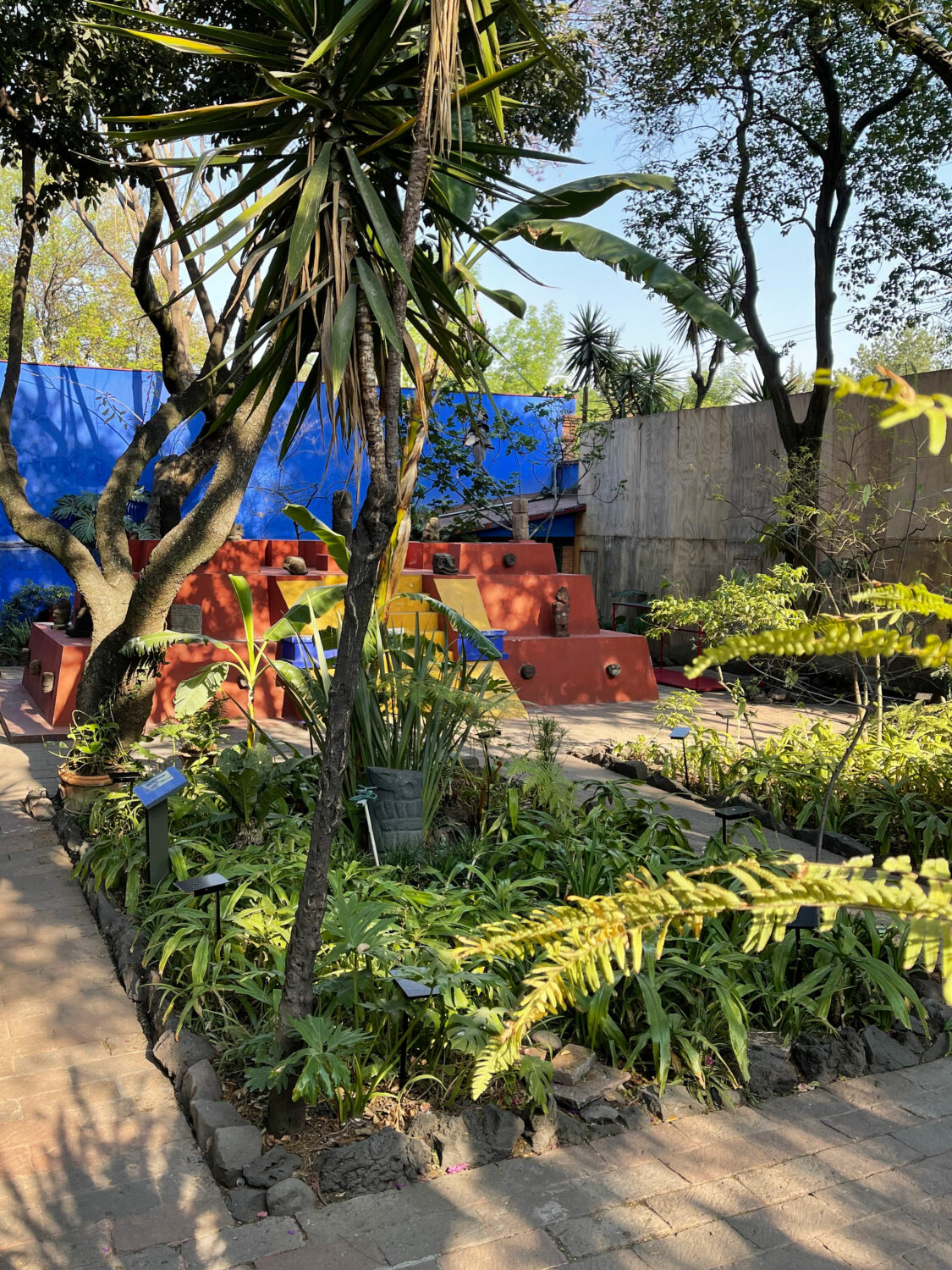
The Mexican Revolution and its aftermath during the 1920s and 30s intensely influenced the pair, who were vocal in their support of the Mexican Communist Party. The overthrow of colonial authority in favour of a populist government brought with it a renewed interest in indigenous Mexican culture and heritage. This ideological shift was evident at Casa Azul, where Kahlo removed her parents’ European decorations and replaced many foreign plants with native Mexican species, including cacti, yucca, ferns, and canna lilies.
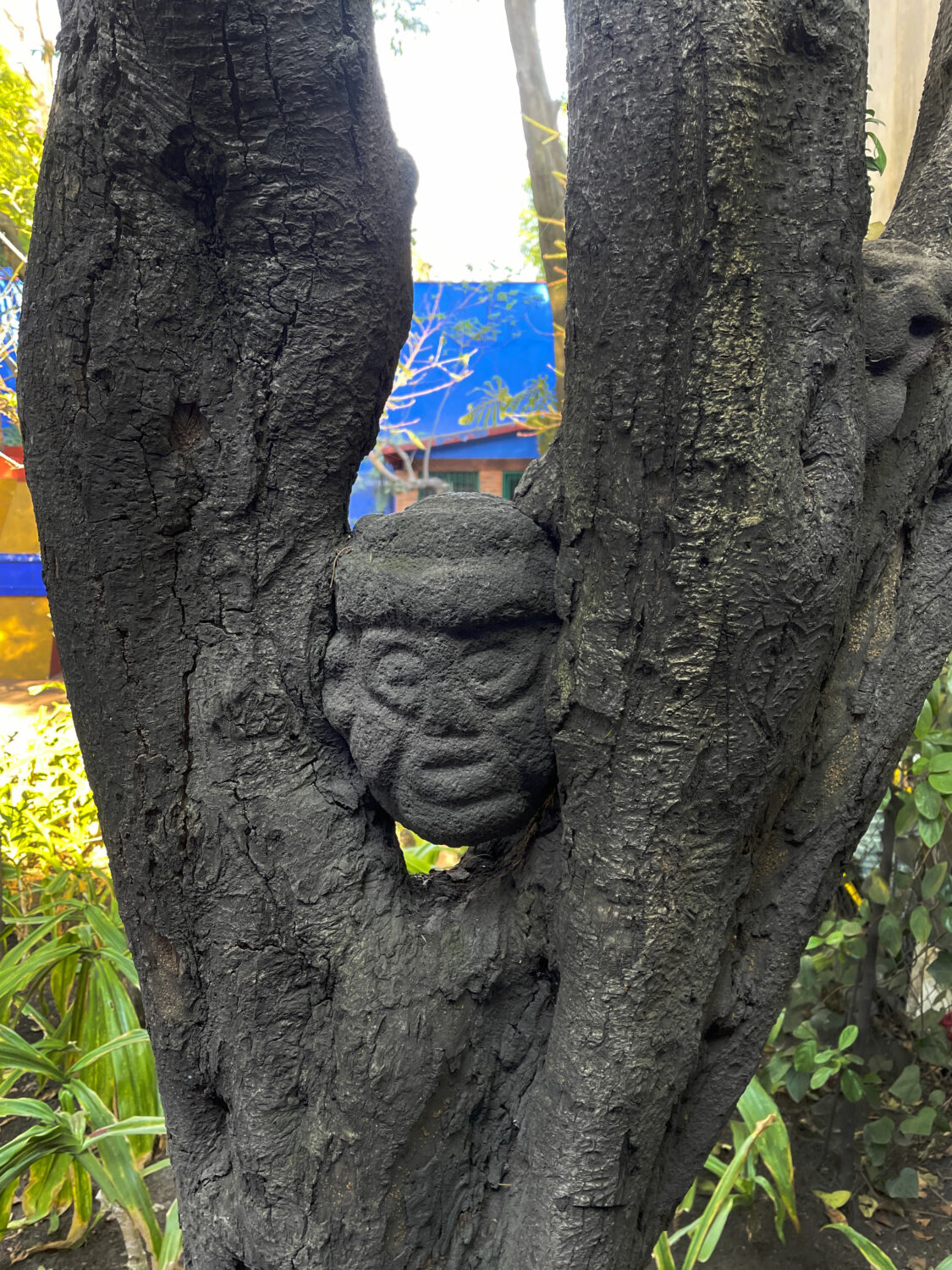
Pre-Hispanic ceramics and sculptures carved from lava rock, depicting coiled serpents and masked figures, are peppered among lush foliage, while a shallow fountain features a mosaicked floor of leaping frogs. Conch shells are dotted throughout the garden, appearing in wall-mounted constellations and sitting in tranquil pools of water. When looking at photographs of Kahlo in Casa Azul’s garden from as early as the 1930s, it’s clear that little has changed from her original vision.
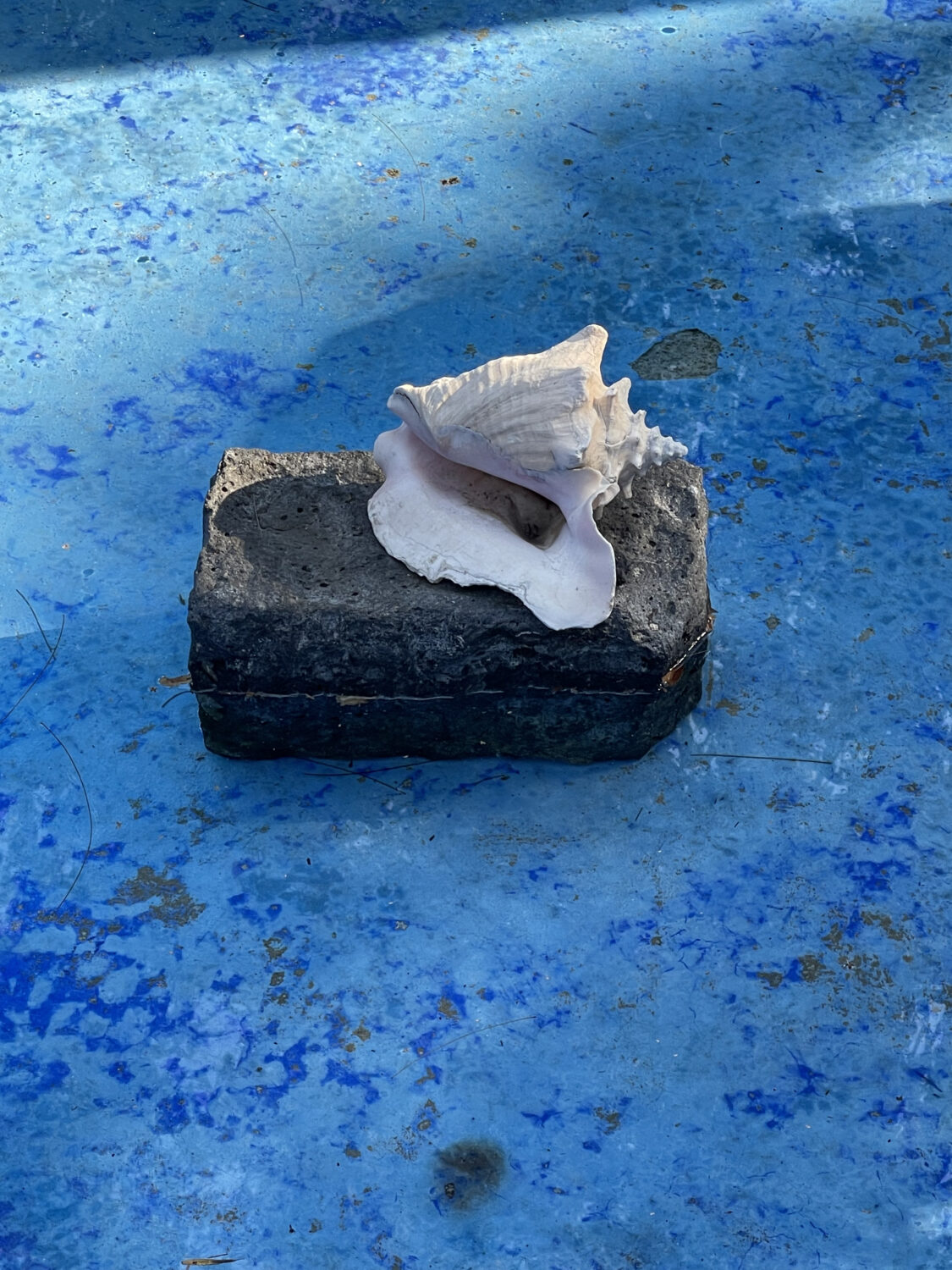
Three years after Kahlo’s passing, in 1957 Rivera began transforming the artist’s family home into a museum in honour of his late wife. Appearing frozen in time, like you stepped into the 1950s, the property showcases an archive of works by Kahlo, Rivera, and other artists, alongside Mexican folk art, historic artefacts, photographs, personal memorabilia, and of course, lots of plants — many of which were originally planted and nurtured by Kahlo during her lifetime.
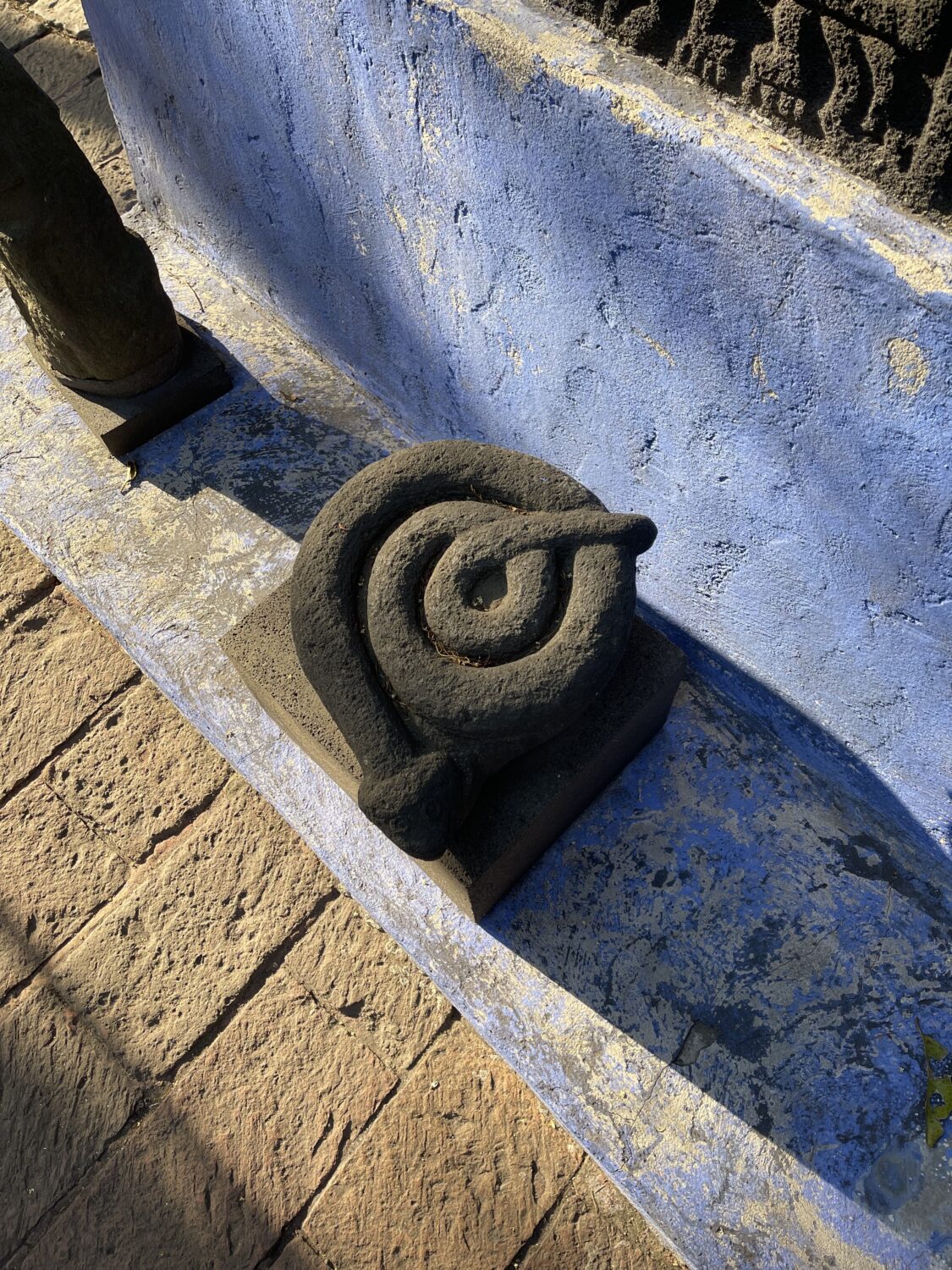
Her profound connection to the natural world is evident in many of her paintings, which often feature intricate botanical details. Her 1936 work, My Grandparents, My Parents, and I, vividly illustrates this bond. In the piece, a young Kahlo stands in the courtyard of Casa Azul, her leg seemingly conjoined with an orange tree. Nearby, a prickly pear cactus sprays seeds that fertilise a human egg, nodding to Kahlo’s deep-rooted connection to Mexico’s soil and her familial lineage.
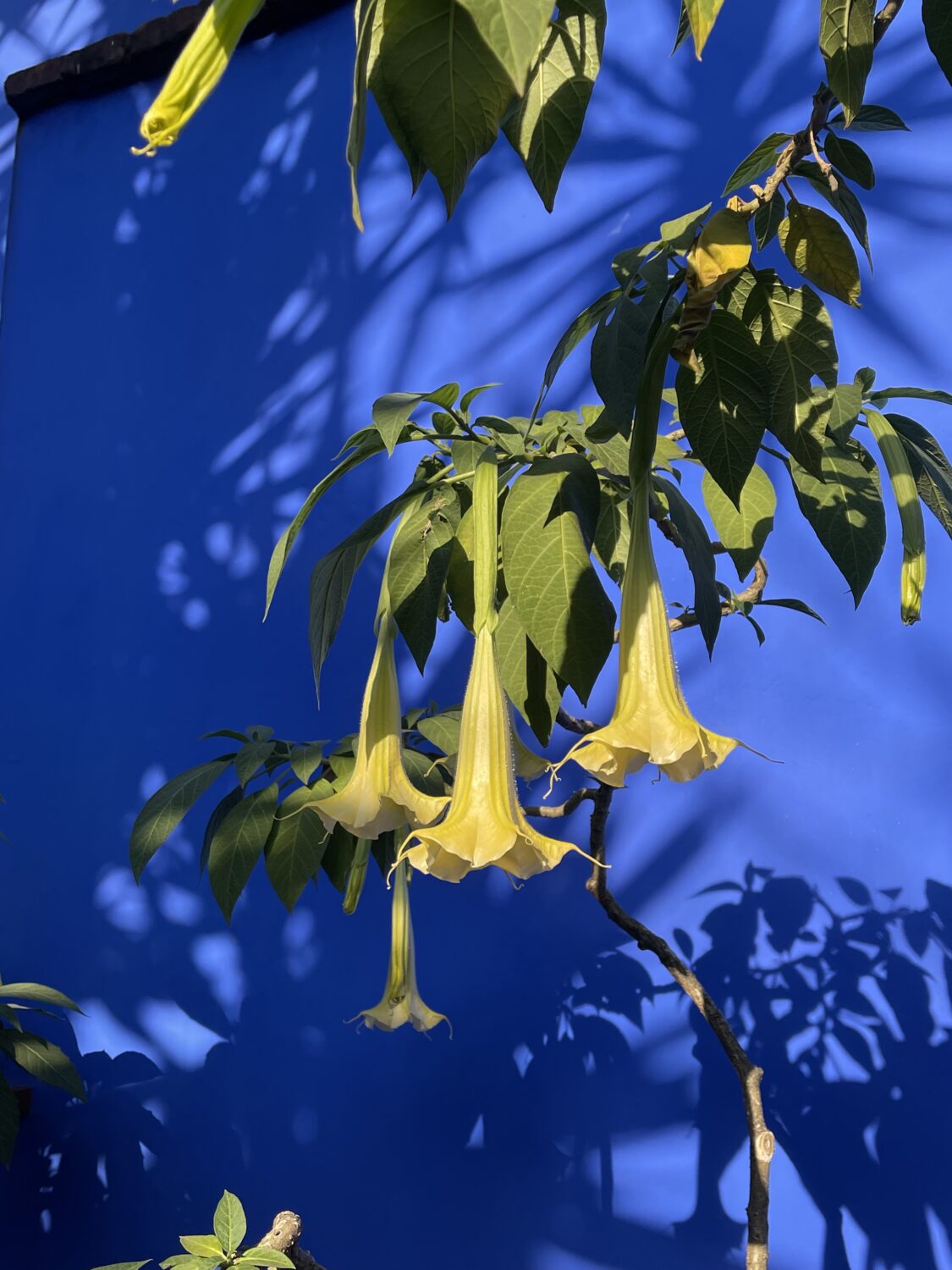
Examining her oeuvre, there are several other instances when the artist depicts herself and various characters as hybrids of plants and humans, exploring themes of identity and transformation through botanical motifs. With this in mind, the garden at Casa Azul is not just a collection or archive but rather a fecund and living muse that embodies Kahlo’s artistic vision, cultural pride, and personal history. Seven decades after her passing, it remains a vibrant sanctuary that continues to inspire.
Feature image: The garden of Frida Kahlo’s Casa Azul, Coyoacán, Mexico City. Photo: Keshav Anand